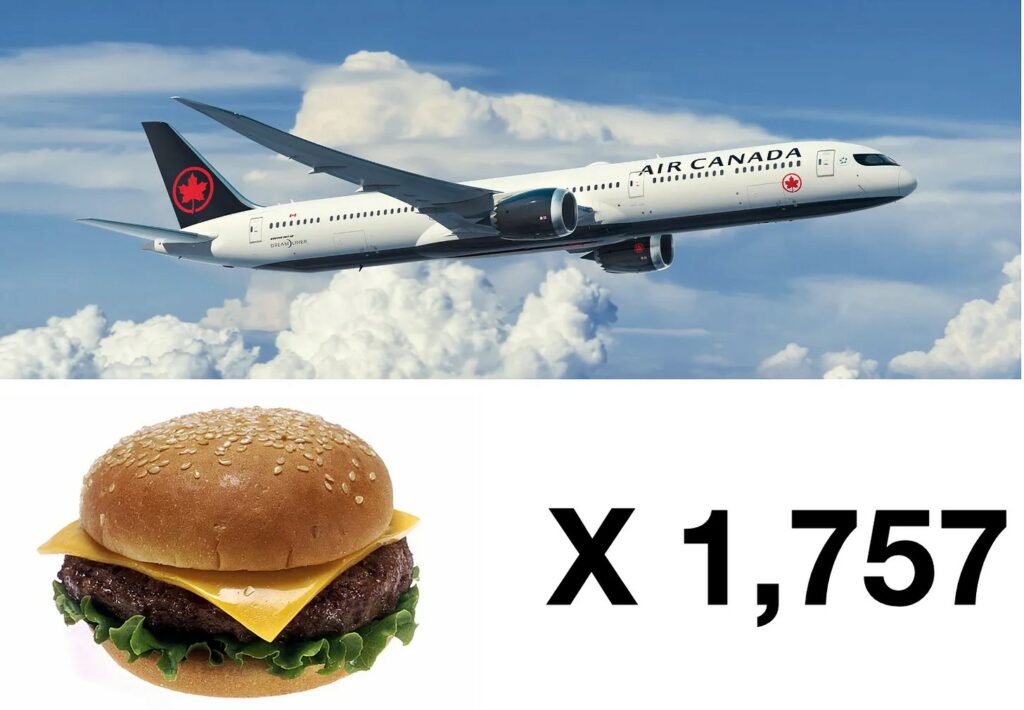Why avoided or imaginary emissions are the future of carbon accounting
by Lloyd Alter
Carbon Upfront
Scope 4 emissions help me justify my flight to New Zealand and compensate for its carbon footprint.
I apologize for my posts not showing up at the usual times; I got back from Australia and New Zealand with a crushing jet lag that I still haven’t recovered from, with a cold thrown in as well. I hope to be back to my usual programming shortly.
Everyone is talking about “Scope 4” and “avoided emissions” these days. Joel Mackower of Trellis (formerly GreenBiz, it is sad that everyone is running from “green”) defines them:
In simple terms, Scope 4 refers to greenhouse gases never emitted due to a product’s cleaner production or attributes. Or, more precisely, “the difference in total lifecycle GHG emissions between a company’s product and some alternative product that provides an equivalent function,” according to the World Resources Institute. “Product,” in this case, includes both goods and services.
Arbor consultants describes how you count them:
“The calculation of avoided emissions involves comparing the emissions that would have been produced under a ‘business as usual’ scenario with the emissions that are actually produced after implementing sustainable practices or technologies. This difference represents the amount of emissions that have been avoided.”
I have called them imaginary emissions, and wrote earlier, “this is like me going on a diet to lose weight and eating a tofu dinner instead of a hamburger, and then crediting myself with the calories saved by not eating a hamburger. Who does that?”
It turns out that a lot of people are doing this. Mackower thinks this could be a big problem.
“Scope 4 is rife with potential for companies to misstate the benefits they engender. In the absence of credible frameworks or guidelines, it is likely that many companies will report information that’s inaccurate, misleading or simply debatable.”
But where I was a total skeptic about imaginary/ avoided/ Scope 4 emissions, I am seriously reconsidering and warming up to them, especially after my recent trip to New Zealand and Australia. I emitted 5.8 tonnes of CO2 in the process, when my carbon budget for living a 1.5-degree lifestyle is only 2.5 tonnes per year. But through the magic of avoided emissions, I can make that all disappear, with imaginary hamburgers!
Lets do the math.
- An average hamburger has a carbon fooprint of 3.3 kg of CO2 equivalent emissions.
- Divided into 5.8 tonnes, the round trip represents 1757 hamburgers.
- The average American eats 154 hamburgers a year (over three per week!)
- So dividing 1757 burgers by 154, it means that if I promise to avoid eating hamburgers for the next 11.4 years, I will have avoided all the emissions from my trip to New Zealand.
Does this make any sense? Mackower worries that Scope 4 and avoided emissions risk becomign “yet another sustainability term that is ill-defined — and, ultimately, misused, overused and abused.” But me not eating a hamburger definitely reduces my carbon emissions, what’s wrong with this picture? If I had known about this when I wrote my book, Living the 1.5 Degree Lifestyle, it would have been so much easier had I got to count every avoided car trip where I biked instead, and all the imaginary red meat I didn’t eat.
Avoided emissions have been used by some architects to classify their buildings “carbon positive” after they redesign the imaginary concrete structure and make it mass timber. Others, like the Populus Hotel in Denver are using the undefined term “carbon positive” after planting trees as offsets, which a University of Colorado Environmental Studies professor tells the Guardian is “like eating KFC every day, then paying someone in Florida to eat vegetables.”
But planting trees is hard and expensive, and somebody has to make sure they don’t burn. Calculating avoided or imaginary emissions is so much easier! Now I don’t have to feel guilty about my flight to Portugal to speak at the Passivhaus conference next month; 1800 kg of carbon divided by 3.3 is only 43 hamburgers, or an additional few months, taking me to 11.8 years without a burger. Easy!
Scope 4 and imaginary emissions are absolutely the future of carbon accounting, it works for everything!


